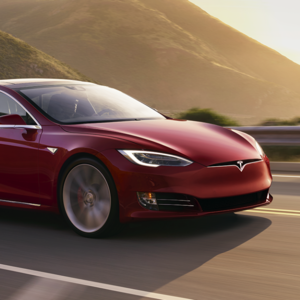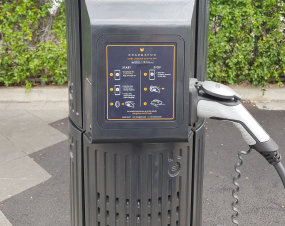Unlike most of the industries struggling right now, global oil trading actually fell before a series of stay-at-home orders crippled worldwide fuel demand. A Saudi-led market flood in early March magnified a late-Feb slump and brought prices down to less than half what they were at the start of the year. Since this time last month, oil has settled around $25-a-barrel.

Typically, when oil prices fall this much, we’d expect anti-EV types to be grinning maniacally and chuckling all the way to the service station in search of sub-$1 petrol. But, unfortunately for them, Australia-wide travel restrictions came just in time to halt their plans to capitalise on any cheap fuel.
As in all things with the current crisis, nobody wins.
The problem with petrol pricing
But fuel buyers have never really won in the game of petrol pricing. The entire service station business model stacks the deck against them.
In theory, servos vary their pricing in real-time, courting motorists using giant LED displays and competing with one another for a relatively stable base of demand. In theory.
What actually happens is widespread collusion on behalf of major retailers to squeeze Aussies as much as possible.
Just look at the crude oil price collapse. With barrels at less than half their February value, you’d assume there would be a sharp drop in bowser prices as retailers snap up the cheap fuel and race to offer the best price to consumers. And there was… in Adelaide.
After the most abrupt crash in early March, Adelaide fuel prices dropped relatively sharply less than a week later and kept falling all the way to 89.5c/litre on April 1st. Meanwhile, despite the wholesale price remaining low, other major Australian cities stayed well above that rate for weeks.
Sydney and Melbourne both remained above 130c until the 26th of March. In fact, their bowser prices rallied as the wholesale oil market stalled. When consumers inevitably picked up on the obvious price gouging, they were urged by ACCC chairman Rod Sims to “make sure you don’t buy from them.”
Meanwhile in New Zealand, bowser rates fell abruptly shortly after the crude price dropped and have stayed low in the month since. So is this just an Australian problem?
Perhaps. Let’s not forget where all this data comes from — the reason we’re able to compare Australian cities is the same source the retailers use to allegedly collude on prices. Informedsources.com allows industry to share information on pricing and extend their mutual benefit at a cost to the consumer. Back-alley meetings and smoky rooms aren’t necessary when all the information you need is readily available online.
While little has been proven, allegations of price gouging have plagued Australian fuel retailers for years. In December last year the ACCC were directed to issue quarterly updates to the Treasurer on the ongoing state of Australian petrol pricing.
Those efforts are still ongoing. And that doesn’t even directly address the massive metro/regional divide on pricing. Regional drivers pay significantly more for fuel than their urban counterparts and it’s getting worse. Small differences of 7-15c/litre have ballooned to 35-35c/litre between Perth and the WA mining town of Kalgoorlie in recent months.
It seems like wherever you look, fuel is doing the opposite of what you’d hope from a fair, regulated utility.
Electric stability
All this makes for an obvious contrast with electricity prices, which operate under an entirely different pricing model that emphasises simplicity and stability.
Depending on the state and the provider, Australians typically pay between 23 and 40c per kilowatt hour (kWh) of electricity. For most electric vehicles, that translates to around 7km of range.
Even if the electricity rate doubled and oil prices remained artificially low, EVs would still be cheaper to run than petrol vehicles. That’s not even counting the savings many households enjoy with rooftop solar or home battery storage.
EVs primary obstacles to adoption today are their higher upfront price and the relative lack of public charging infrastructure. How these change over time will play a huge role in dictating their prevalence in years to come.
By many estimates, EVs are expected to become cheaper than combustion cars sometime around the middle of this decade. Many cite the $100-per-kWh battery pack as the metric for price parity to be achieved at scale.
Battery prices are down and falling | Bloomberg report
Similarly, public charging access is consistently growing. Major retailers, highways, and automakers are embracing charging to boost EVs’ practicality for Aussie drivers.

But the price of electricity, and of EVs, is only half the equation. Recent events highlight the volatility and unreliability of petrol pricing, both of which will be instrumental in shaping the near-future of Australian transport.
Further disruptions to global oil are inevitable but the shape they’ll take is far from certain.
Looking forward
In the early 2000s it was generally assumed that the price of oil would continue to climb as supplies of the non-renewable resource gradually dried up. That clearly hasn’t come to pass.
In 2014, a US-led boom of shale oil production made it clear that there is actually enough oil to sustain the world’s needs for the foreseeable future. Suddenly the price-hike theory seemed much less realistic and an alternative was proposed: oil’s downfall will not be preceded by rising prices, but by falling ones.
This idea came along around the time EVs started to look like a realistic alternative to combustion fuels. With Tesla growing quickly and some legacy automakers releasing their first electric models, it was becoming obvious that electric mobility was serious in its goal of eventually replacing petrol.
Today, that view is endorsed even in the notoriously EV-sceptical Liberal Party. If enough drivers make the switch on their own terms and petrol demand falls as a result, we might never see the drastic price increases once prophesized. And even if we do, it won’t be the EV-driving public that suffers.
In the meantime, you might as well enjoy what savings you can at your local service station. It won’t last.





